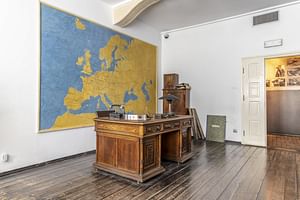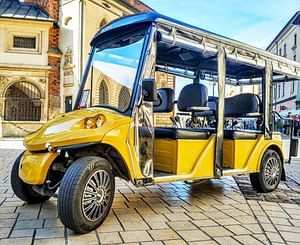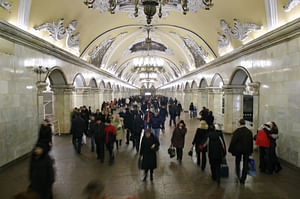What about Wawel Castle?
The Wawel Hill is to Krakow what the Acropolis was to ancient Athens or the Capitoline Hill to Rome. The rocky outcropping towering over the banks of the Vistula has been the seat of secular and ecclesiastical power, today it is the most visited museum.
Residence of Polish kings and a symbol of statehood, in 1930 the Castle also became one of the most important museums in Poland. It collects collections of paintings, graphics, sculptures, fabrics, goldsmiths, military items, porcelain and furniture. The chambers display the famous tapestries of Zygmunt August and magnificent Renaissance Italian paintings from the Lanckoronski collection, and the Wawel collections of Eastern art contain the most important and largest collection of tents in Europe.
The Royal Castle is also an important center for the conservation of works of art. Permanent exhibitions recreate the appearance of the rooms from the Renaissance and Baroque periods.
Krakow's Main Market Square from the inside out
For almost 800 years the Market Square has been the central square of Royal Cracow! What has not happened here only during this time! Trade rows were selling goods from all over the world and Krakow merchants made their fortunes from it, the city authorities strictly monitored the order, in the dungeons of the Town Hall the executioner tortured the suspects, and the kings parade through the square to get to their castle. What a time it was... But these times are not entirely missing! Even today you can find the most interesting traces of past events on Market Square, and even more so under Market Square! We invite you to take a walk on one of the most beautiful squares in Europe with a visit to the Dungeon Market Historical and Archaeological Museum!
First we will walk around the square itself, find the most interesting artifacts of the old times and unravel their purpose, find out what events took place here, what legendary persons have been here.
After that we will go 4 metres underground to the Dungeon Market Museum to find ourselves on the same level as the cobbled roads of Krakow 12-13th century.
Schindler's Factory
A visit to one of the most popular museums in Krakow - the former Enamel Factory, where a German entrepreneur employed Jews to save them from deportation to camps and death, there is an exhibition "Krakow under Nazi occupation". The modern arrangement of the exhibition is rather a theater and a film telling the history of the city, its inhabitants and occupants, rather than an ordinary museum.
In former ghetto
The Ghetto Heroes Square is a square in the Podgórze district of Krakow. In the years 1941–1943 it was within the ghetto. It was a place of concentration of the Jewish population before transport to concentration camps. Currently, there is an unusual monument in this place - several dozen cast-iron chairs standing individually in the square. They symbolize property and belongings of Krakow Jews scattered on the streets after the liquidation of the ghetto.
The salt wonders of Wieliczka
The Salt Mine in the town of Wieliczka, located nearby Krakow, was opened in the 13th century as one of the oldest salt mines in the world. It reaches almost 327 meters underground and is over 287 kilometers. Walk through 20 chambers and countless corridors and steps on the tourist route, breathe the healing air fully and admire the magnificent wooden structures, natural lakes, chambers and majestic salt sculptures. Let the amazing trip to the Wieliczka Salt Mine end a successful day.
Meeting point: on the St. Mary Magdalene Square, at the Piotr Skarga Monument (click to go to Google Maps)
The tour starts at




















